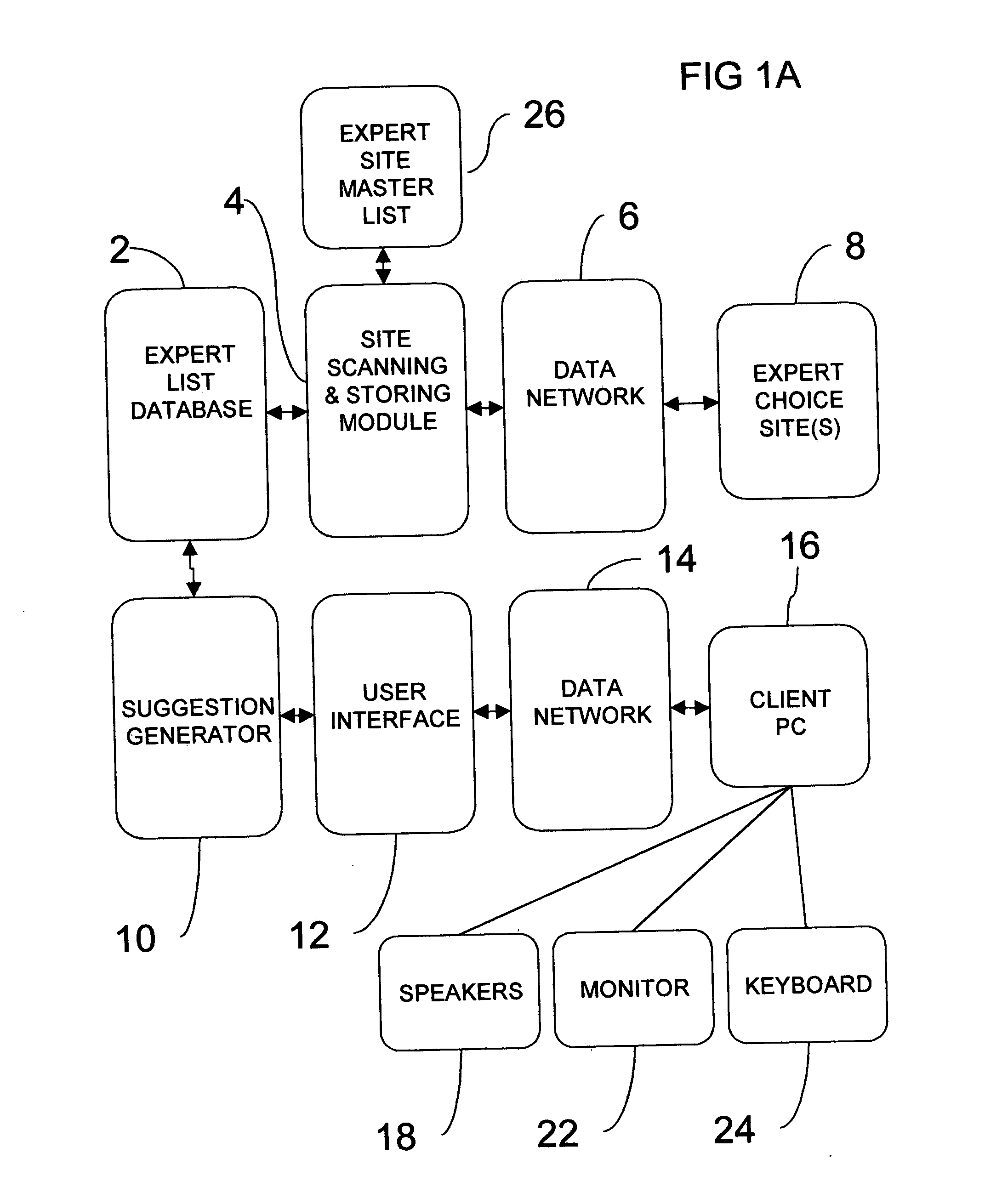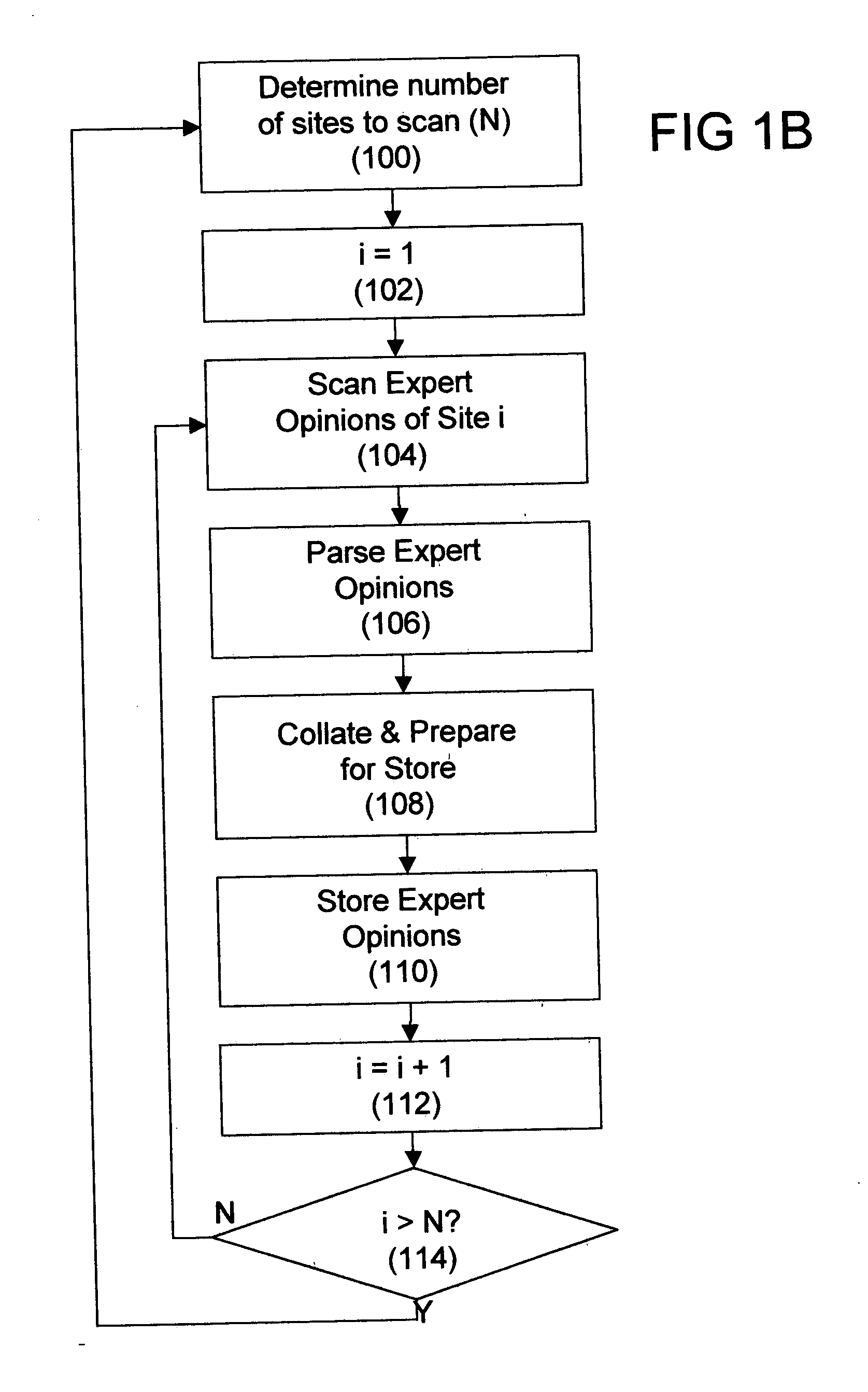System and method for recommendation of media segments
a technology of media segments and recommendations, applied in the field of automatic recommendation and serving of media segments, can solve the problems of slow and cumbersome tool for exploring the highly varied world of accumulated user data, poor media quality judgment by most users, and few people having experienced much of the breadth of available content, etc., to achieve the effect of reducing storage and processing capabilities
- Summary
- Abstract
- Description
- Claims
- Application Information
AI Technical Summary
Benefits of technology
Problems solved by technology
Method used
Image
Examples
Embodiment Construction
FIG. 1A
A schematic block diagram of a preferred embodiment of the media recommendation system of the present invention is illustrated in FIG. 1A. The system has a list scanning and storing module 4. Directed by an expert site master list 26, this module operates through a data network 6 to request and receive information from one or more expert choice sites 8. Module 4 stores processed data in the expert list database 2. This database is used by the suggestion generator 10 to generate media segment suggestions in response to requests received through the user interface 12. Through a data network 14, one or more users use client PCs 16 and their associated peripherals (which may include speakers 18, a video monitor 22, or a keyboard 24) to interact with user interface 12 through data network 14, requesting and receiving media segment suggestions from suggestion generator 10.
In a preferred embodiment, these parts of the system consist as follows: 1. Expert choice database 2 consis...
PUM
 Login to View More
Login to View More Abstract
Description
Claims
Application Information
 Login to View More
Login to View More - R&D
- Intellectual Property
- Life Sciences
- Materials
- Tech Scout
- Unparalleled Data Quality
- Higher Quality Content
- 60% Fewer Hallucinations
Browse by: Latest US Patents, China's latest patents, Technical Efficacy Thesaurus, Application Domain, Technology Topic, Popular Technical Reports.
© 2025 PatSnap. All rights reserved.Legal|Privacy policy|Modern Slavery Act Transparency Statement|Sitemap|About US| Contact US: help@patsnap.com



